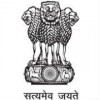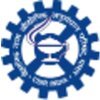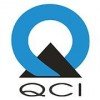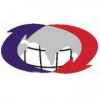Filter interviews by
National Career Service Interview Questions and Answers
10 Interview questions
OOP is based on four main pillars: Encapsulation, Abstraction, Inheritance, and Polymorphism, enhancing code modularity and reusability.
Encapsulation: Bundling data and methods in a class. Example: A class 'Car' with properties like 'speed' and methods like 'accelerate()'.
Abstraction: Hiding complex implementation details. Example: A 'Payment' interface that defines methods like 'processPayment()' without revealin...
Steps to deploy an application to Kubernetes
Create a Kubernetes deployment file with specifications for the application
Apply the deployment file using kubectl apply command
Monitor the deployment using kubectl get pods command
Expose the application using a Kubernetes service
Scale the application by adjusting the replica count in the deployment file
A stage in Docker is a logical division in a Dockerfile where a specific set of instructions are executed and the resulting image is saved.
Stages help in breaking down complex build processes into smaller, manageable parts.
Each stage can have its own base image and set of instructions.
Stages can be used to optimize the build process by reusing intermediate images.
Stages are defined using the 'FROM' keyword in a Do...
Modules in Terraform are reusable configurations that can be used to create multiple instances of resources.
Modules help in organizing and reusing Terraform configurations.
They allow for creating reusable components that can be shared across different projects.
Modules can be used to encapsulate related resources and configurations.
They promote code reusability and maintainability in Terraform scripts.
NullResource in Terraform is a resource that performs no actions when applied, but can be used to trigger provisioners or other side effects.
NullResource is a resource type in Terraform that allows you to run provisioners without creating any infrastructure.
It can be used to trigger actions like running scripts or commands on the local machine or remote servers.
NullResource is often used for tasks like running ini...
CrashLoopBackOff is an error state in Kubernetes when a container repeatedly crashes and fails to start.
CrashLoopBackOff occurs when a container in a Kubernetes pod crashes and Kubernetes tries to restart it, but it keeps failing.
This error is often caused by misconfigurations, resource constraints, or application bugs.
To troubleshoot CrashLoopBackOff, check the container logs, resource limits, and pod configurati...
OOPs is a programming paradigm based on the concept of objects, which can contain data and code.
OOPs stands for Object-Oriented Programming
It focuses on creating objects that interact with each other to solve a problem
It includes concepts like inheritance, polymorphism, encapsulation, and abstraction
Examples of OOPs languages are Java, C++, Python, and Ruby
Functional Interface is an interface with only one abstract method.
Functional Interface is used in Lambda expressions.
It can have any number of default or static methods.
Examples include Runnable, Comparator, and Callable interfaces.
Functional Interface can be annotated with @FunctionalInterface annotation.
Lambda expression is a concise way to represent an anonymous function in Java 8. DI (Dependency Injection) is a design pattern used in Spring to manage object dependencies.
Lambda expressions are used to implement functional interfaces with a single abstract method.
DI in Spring allows for loose coupling between objects by injecting dependencies at runtime.
Example of Lambda expression: (x, y) -> x + y
Example of DI i...
Modules in Terraform are reusable configurations that can be used to create resources in a consistent and efficient manner.
Modules help in organizing and reusing Terraform configurations
They can be used to create resources, manage infrastructure, and define policies
Modules can be shared and reused across different projects
Example: Creating a module for provisioning an AWS EC2 instance
National Career Service Interview Experiences
8 interviews found
I applied via Naukri.com and was interviewed in Jan 2023. There were 2 interview rounds.

(3 Questions)
- Q1. Java 8 What is Lamda Expression What is DI in spring
- Ans.
Lambda expression is a concise way to represent an anonymous function in Java 8. DI (Dependency Injection) is a design pattern used in Spring to manage object dependencies.
Lambda expressions are used to implement functional interfaces with a single abstract method.
DI in Spring allows for loose coupling between objects by injecting dependencies at runtime.
Example of Lambda expression: (x, y) -> x + y
Example of DI in Spr...
- Q2. What is Functional Interface
- Ans.
Functional Interface is an interface with only one abstract method.
Functional Interface is used in Lambda expressions.
It can have any number of default or static methods.
Examples include Runnable, Comparator, and Callable interfaces.
Functional Interface can be annotated with @FunctionalInterface annotation.
- Q3. What is oops concept
- Ans.
OOPs is a programming paradigm based on the concept of objects, which can contain data and code.
OOPs stands for Object-Oriented Programming
It focuses on creating objects that interact with each other to solve a problem
It includes concepts like inheritance, polymorphism, encapsulation, and abstraction
Examples of OOPs languages are Java, C++, Python, and Ruby
Interview Preparation Tips
Skills evaluated in this interview
I appeared for an interview in Feb 2025.
The 90-minute test includes basic aptitude, verbal ability, followed by two data structure and algorithm questions.
(2 Questions)
- Q1. What are the pillars of Object-Oriented Programming (OOP)?
- Ans.
OOP is based on four main pillars: Encapsulation, Abstraction, Inheritance, and Polymorphism, enhancing code modularity and reusability.
Encapsulation: Bundling data and methods in a class. Example: A class 'Car' with properties like 'speed' and methods like 'accelerate()'.
Abstraction: Hiding complex implementation details. Example: A 'Payment' interface that defines methods like 'processPayment()' without revealing the...
- Q2. What questions were asked regarding the OSI model in the context of computer networking?
Interview Preparation Tips
I applied via Naukri.com and was interviewed in Aug 2024. There was 1 interview round.
(5 Questions)
- Q1. What are the steps to deploy an application to kubernetes?
- Ans.
Steps to deploy an application to Kubernetes
Create a Kubernetes deployment file with specifications for the application
Apply the deployment file using kubectl apply command
Monitor the deployment using kubectl get pods command
Expose the application using a Kubernetes service
Scale the application by adjusting the replica count in the deployment file
- Q2. What are modules in terraform?
- Ans.
Modules in Terraform are reusable configurations that can be used to create multiple instances of resources.
Modules help in organizing and reusing Terraform configurations.
They allow for creating reusable components that can be shared across different projects.
Modules can be used to encapsulate related resources and configurations.
They promote code reusability and maintainability in Terraform scripts.
- Q3. Define stage in docker.
- Ans.
A stage in Docker is a logical division in a Dockerfile where a specific set of instructions are executed and the resulting image is saved.
Stages help in breaking down complex build processes into smaller, manageable parts.
Each stage can have its own base image and set of instructions.
Stages can be used to optimize the build process by reusing intermediate images.
Stages are defined using the 'FROM' keyword in a Dockerf...
- Q4. What is CrashLoopBackOff
- Ans.
CrashLoopBackOff is an error state in Kubernetes when a container repeatedly crashes and fails to start.
CrashLoopBackOff occurs when a container in a Kubernetes pod crashes and Kubernetes tries to restart it, but it keeps failing.
This error is often caused by misconfigurations, resource constraints, or application bugs.
To troubleshoot CrashLoopBackOff, check the container logs, resource limits, and pod configuration.
Ex...
- Q5. What is NullResource in terraform.
- Ans.
NullResource in Terraform is a resource that performs no actions when applied, but can be used to trigger provisioners or other side effects.
NullResource is a resource type in Terraform that allows you to run provisioners without creating any infrastructure.
It can be used to trigger actions like running scripts or commands on the local machine or remote servers.
NullResource is often used for tasks like running initiali...
Skills evaluated in this interview
(2 Questions)
- Q1. K8s architecture
- Q2. Modules in terrafrom
- Ans.
Modules in Terraform are reusable configurations that can be used to create resources in a consistent and efficient manner.
Modules help in organizing and reusing Terraform configurations
They can be used to create resources, manage infrastructure, and define policies
Modules can be shared and reused across different projects
Example: Creating a module for provisioning an AWS EC2 instance
Skills evaluated in this interview
(1 Question)
- Q1. Self introduction
(1 Question)
- Q1. Personal details

(1 Question)
- Q1. How long have you been into business?
Interview Preparation Tips
I applied via Referral and was interviewed before Jun 2021. There were 2 interview rounds.
(1 Question)
- Q1. About the oops concepts
(1 Question)
- Q1. How you would like to join a company who is working with different technologies at a time?
Interview Preparation Tips
I applied via Recruitment Consultant and was interviewed before Oct 2019. There were 3 interview rounds.
Interview Questionnaire
1 Question
- Q1. Majourly focus on automation
Interview Preparation Tips
Top trending discussions






Interview questions from similar companies

Software Developer Interview Questions & Answers
National Informatics Centreposted on 11 Oct 2020
Interview Questionnaire
5 Questions
- Q1. What is server side state management
- Ans.
Server side state management is the process of storing and managing data on the server side of a web application.
It involves storing data on the server instead of the client side
It helps maintain consistency and security of data
Examples include session management and database management
- Q2. What is page life cycle
- Ans.
Page life cycle refers to the series of events that occur between the time a user requests a web page and the time the page is rendered on the user's browser.
Page life cycle consists of several stages such as initialization, loading, rendering, and unloading.
During initialization, the page is created and controls are initialized.
During loading, the page is loaded with data and controls are populated.
During rendering, t...
- Q3. What is components of dot net
- Ans.
The components of .NET include the Common Language Runtime, Framework Class Library, and ASP.NET.
Common Language Runtime (CLR) - manages memory, security, and execution of code
Framework Class Library (FCL) - collection of reusable classes, interfaces, and value types
ASP.NET - web application framework for building dynamic web pages and web services
- Q4. What is cookies
- Ans.
Cookies are small text files stored on a user's computer by a website to remember user preferences and login information.
Cookies are used to track user activity on a website
They can be used to store user preferences and login information
Cookies can be either session cookies or persistent cookies
Session cookies are deleted when the user closes their browser
Persistent cookies remain on the user's computer until they expi...
- Q5. What is clr
- Ans.
CLR stands for Common Language Runtime, a component of .NET framework that manages execution of .NET programs.
CLR is responsible for memory management, security, and exception handling.
It compiles code into an intermediate language (IL) and then executes it.
CLR allows for language interoperability, meaning that code written in different languages can be compiled to the same IL and run on the same runtime.
Examples of la...
Skills evaluated in this interview

Software Developer Interview Questions & Answers
National Informatics Centreposted on 20 May 2021
Interview Questionnaire
1 Question
- Q1. What is class, object? Oops concepts in java? Struts flow.. Database ddl and dml commands? System test Ajax calls
- Ans.
Questions related to software development concepts and technologies.
Class is a blueprint for creating objects in Java.
Object is an instance of a class.
OOPs concepts include inheritance, polymorphism, encapsulation, and abstraction.
Struts is a framework for developing Java web applications.
Database DDL commands are used to define database schema, while DML commands are used to manipulate data.
System testing is a type of...
Skills evaluated in this interview
National Career Service Interview FAQs
Tell us how to improve this page.
National Career Service Interviews By Designations
- National Career Service Devops Engineer Interview Questions
- National Career Service Software Developer Interview Questions
- National Career Service Test Analyst Interview Questions
- National Career Service Executive Trainer Interview Questions
- National Career Service Trade Marketing Manager Interview Questions
Interview Questions for Popular Designations
Overall Interview Experience Rating
based on 5 interview experiences
Difficulty level
Duration
Interview Questions from Similar Companies
National Career Service Reviews and Ratings
based on 37 reviews
Rating in categories
|
Software Engineer
96
salaries
| ₹3.6 L/yr - ₹6 L/yr |
|
Software Developer
35
salaries
| ₹3 L/yr - ₹6.8 L/yr |
|
Full Stack Developer
10
salaries
| ₹1 L/yr - ₹3.6 L/yr |
|
Young Professional
9
salaries
| ₹6 L/yr - ₹7 L/yr |
|
Java Developer
9
salaries
| ₹3 L/yr - ₹7.5 L/yr |

National Informatics Centre

Government of India

Csc E Governance Services

Central Reserve Police Force
- Home >
- Interviews >
- National Career Service Interview Questions












